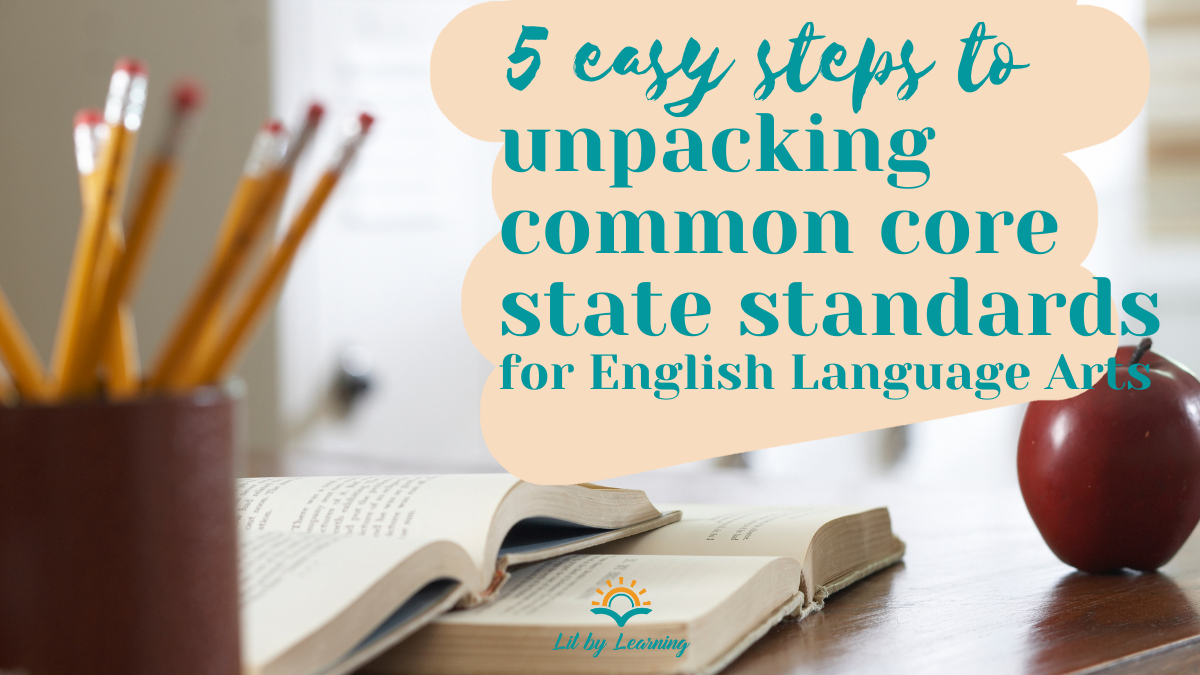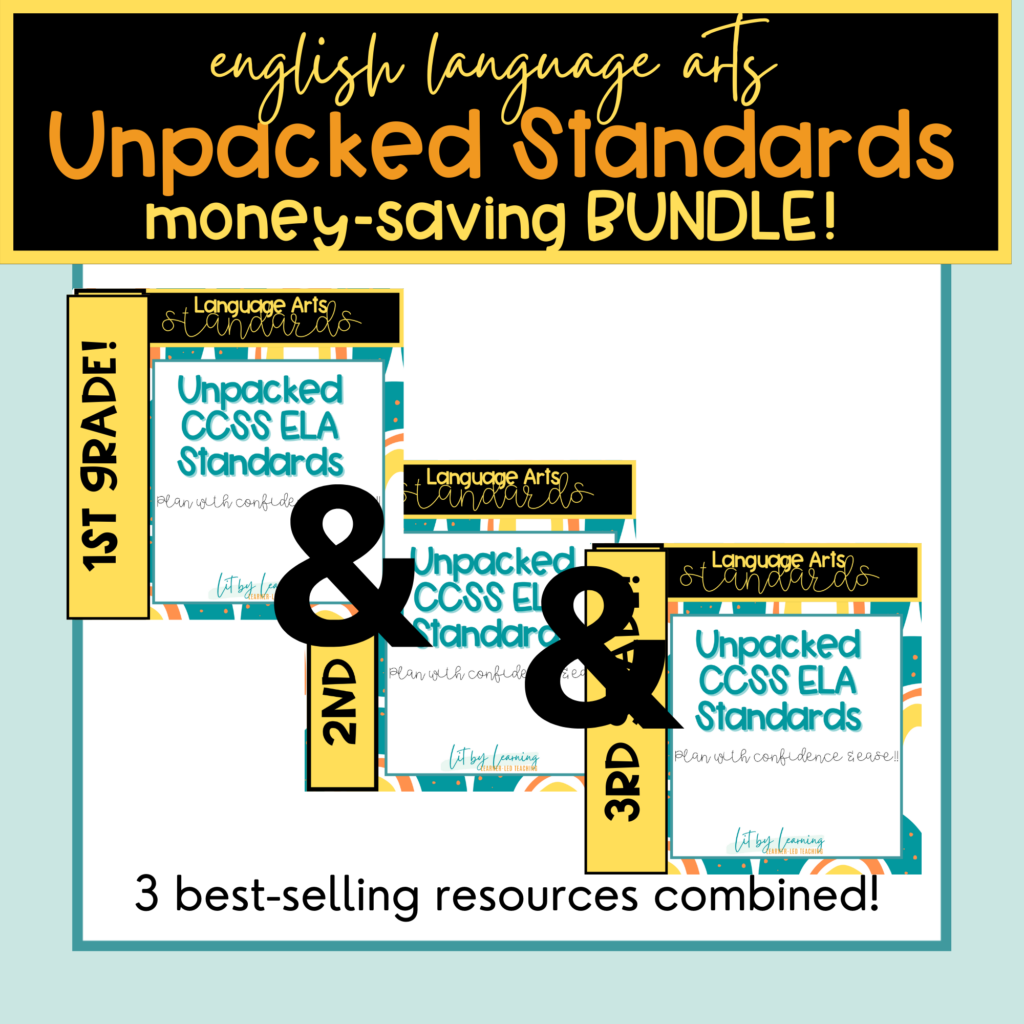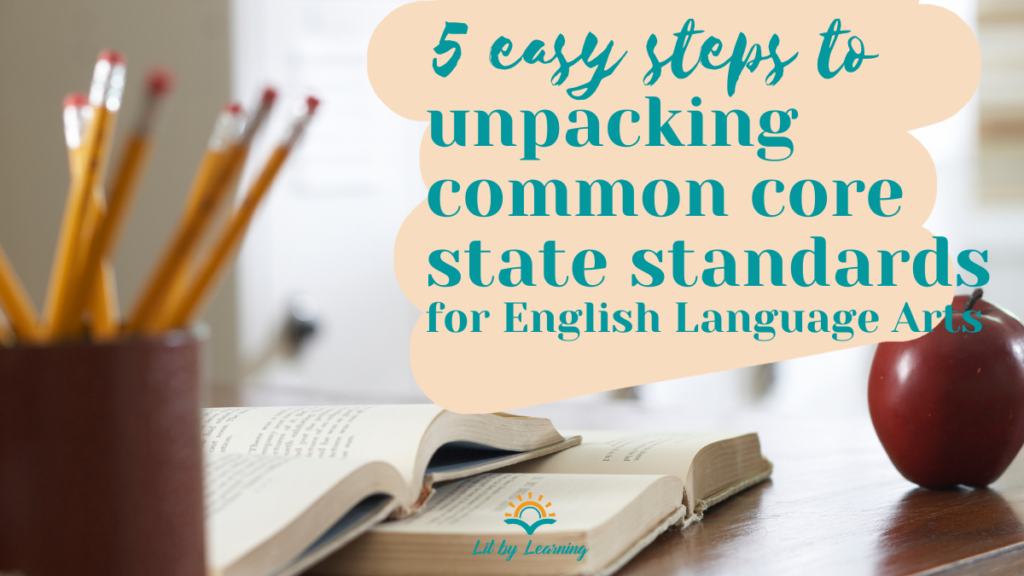
Educators! You may have heard of unpacked standards or deconstructed standards, but the details are a bit fuzzy. “How to unpack standard? Why is it necessary? These 5 simple steps telling how to unpack a standard will have you deconstructing the common core state standards for ELA in no time!

Real quick: Have you gotten your FREE guide to learner-led teaching?
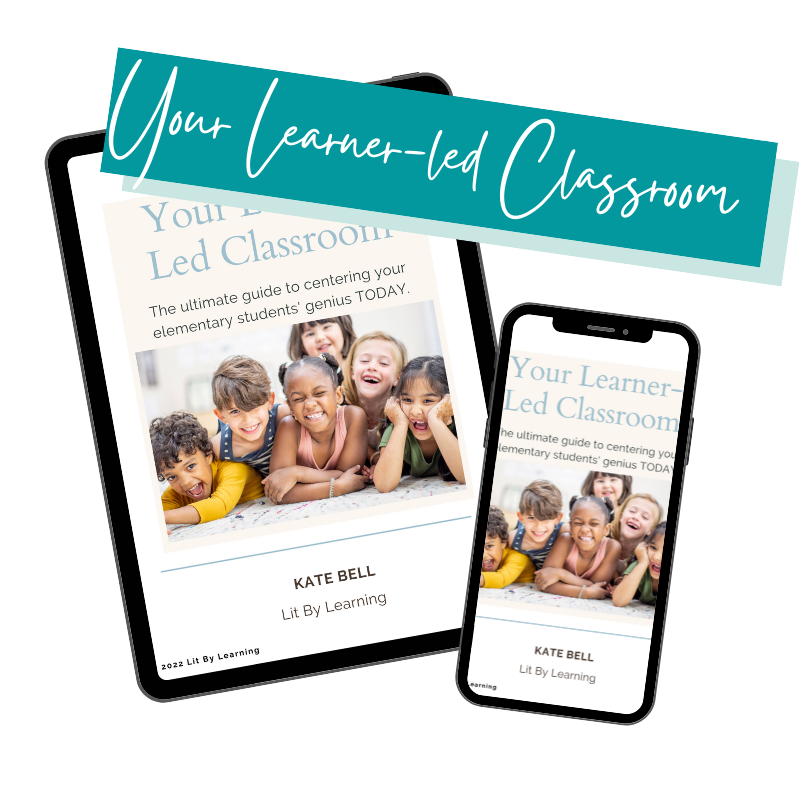
Why is it necessary to unpack standards?
It’s pretty simple: teachers who deeply understand the standards are best suited to plan and deliver the instruction that their students need. Standards cast a wide net with a big picture that sounds good, but what do they actually require of the students? What prior knowledge & skills need to be activated? Which vocabulary needs to be taught? What conceptual understandings are essential to mastery? Excellent teachers get to the very root of their students’ learning: the standards. When we know what is required, we can create a clear roadmap to get there.
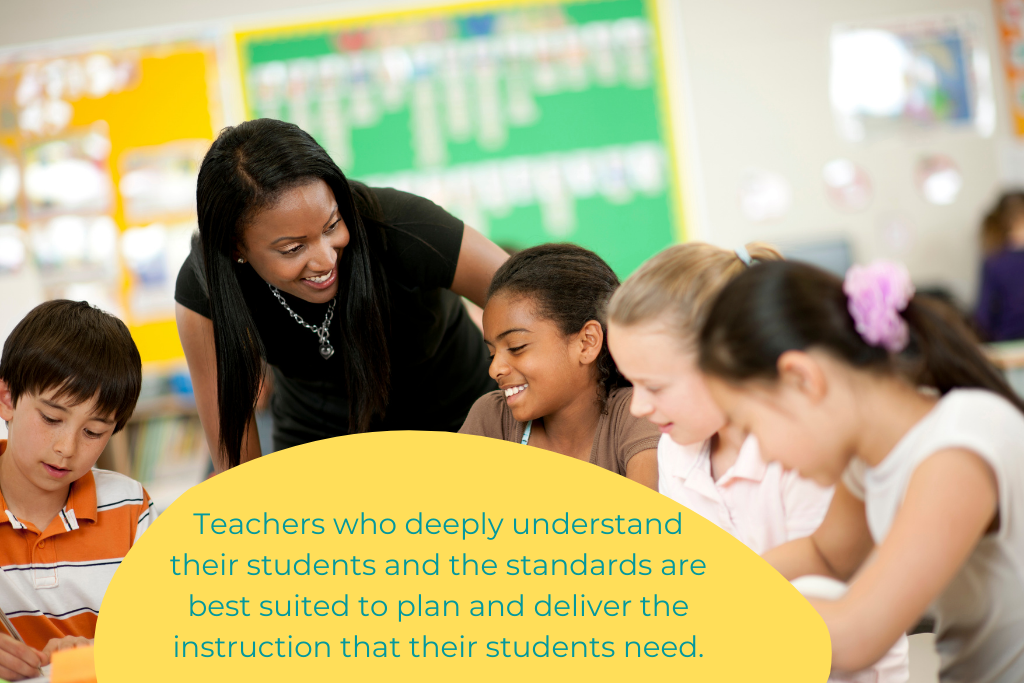
What is a standard vs. a learning objective?
Many teachers confuse standards with learning objectives. Folks both inside and outside of the education world use the terms synonymously Let’s make sure we start with a solid understanding of the difference between a standard vs. an objective!
What is a standard?
Standards, like the Common Core State Standards for ELA, are teacher-facing expectations for the entire year of instruction. Standards are too complicated and too dense to be taught in single lessons. This explains why we need to break them down into objectives.
What is an objective?
An objective is a lesson-level target. Objectives can be student-facing (I can…) or teacher-facing (Students will be able to…) and are very focused. They are measurable and can be achieved within one lesson.
Why didn’t I learn about unpacking the common core state standards for ELA earlier?
If unpacking the common core state standards is so important, why haven’t I learned to do it before? Great question! The Common Core State Standards are still relatively fresh, being adopted in most states in 2010. In fact, standards based education as we now know it can first be traced back to as recently as 1983. This marked the release of the well-known A Nation at Risk: The Imperative for Educational Reform, the outcome of the US National Commission on Excellence in Education.
In the 1990’s, the general public turned increasingly against the outcomes-based education that had been in place until then. In this system, students were compared to each other with the result of incredible variance of learning achievement. Before that, standards varied widely by state and even by the district. Easily confused with learning targets, assessment goals, or other similar buzzwords, standards were inconsistent and felt unstable.
It’s definitely not your fault that you weren’t taught the process of unpacking standards before! In the spirit of “know better, do better,” let’s get started on a process that is sure to transform your teaching practice!
Why should I start with the common core state standards for ELA?
Unpacking standards is kind of a Pringles concept: once you pop, you can’t stop. You’ll want to unpack and uncover and deconstruct everything you teach. While I certainly recommend doing this, I started with the common core state standards for ELA because they were much broader than my grade level’s math counterparts. They seemed meatier and more difficult to understand. Especially in the context of teaching primarily ELL students, I knew it was where I wanted to dedicate my first efforts.
The ELA standards also require an intricate of skills and knowledge, as discussed at length in Natalie Wexler’s book, The Knowledge Gap. This means that they need even more dissecting to be broken into lesson-size chunks.
5 steps to unpacking the common core ELA standards
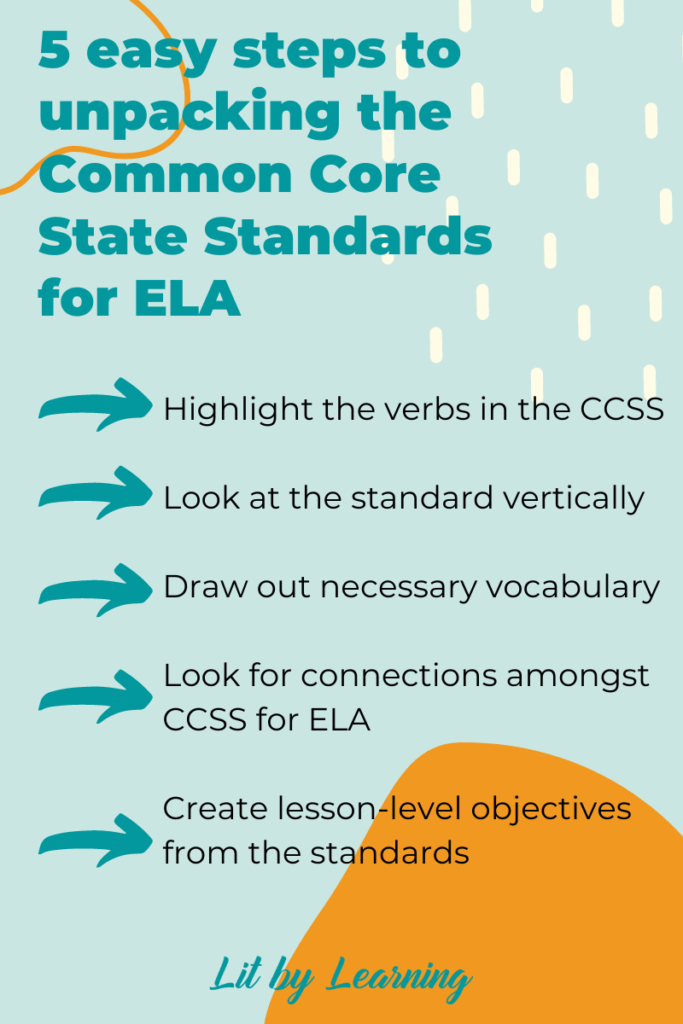
1. Highlight the verbs in the CCSS
This first, very simple step helps you narrow in on exactly what students are required to do to achieve mastery. I like to annotate the standards with a Bloom’s Taxonomy or a Webbs Depth of Knowledge tool handy. This helps me understand the rigor level of the standard. Take note of what the standard calls for – and what it does not. For example, many of the ELA standards for first grade require students to demonstrate comprehension but do not specify that it must be shown in a written format. Understanding these nuances helps you zone in on the exact skills needed.
2. How to unpack a standard: Look at the standard vertically
Using a simple table, place your grade level’s standard in between the previous grade-level standard and that of the next grade. Make a note of the differences you see. Think:
- What skills and knowledge will on-level students already have?
- How do the standard’s requirements change and develop vertically?
- What is the exact rigor level in my grade level as opposed to the surrounding grade levels?
- How can I equip students to be prepared for the next level of this standard?
Sometimes the differences will be minor – or even non-existent. Other times, however, there are significant jumps from one grade level to the next. Students will require more support on these “heavy lift” standards!
3. How to unpack a standard: Draw out necessary vocabulary
What vocabulary does the standard require? What words, terms or phrases are integral? Take note of both academic language (annotate, summarize, etc.) as well as content language (climax, resolution. etc.) Your students will need to know both! Also, think about related words that students may need to recall from previous years.
4. Unpack the standard? Look for connections amongst common core state standards for ELA
As you start to look more closely at the Common Core State Standards, you may find that some of them are very similar. They’re the ones where you have to go back and look again because you *thought* you already did this one. You’re right! The similarities in required verbs and vocabulary indicate that they are closely connected standards; standards that are often great partners at the unit lesson. Ensure that you know the differences between these connected standards instead of letting them throw you off!
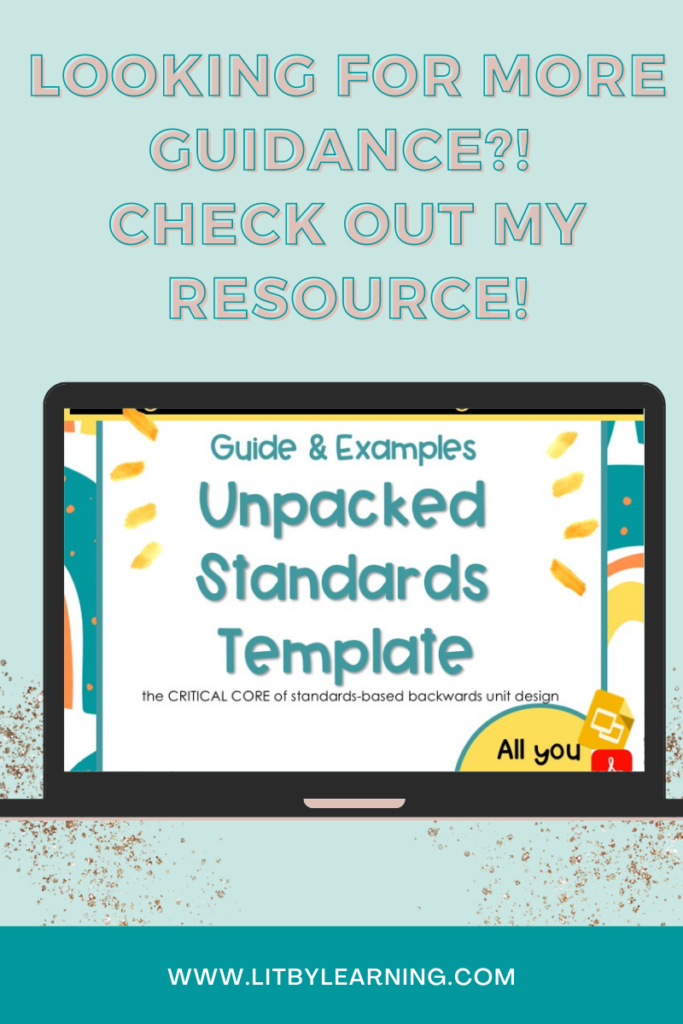
5. How to unpack a standard: Create lesson-level objectives from the standards
Now you’re getting to the real thick of things! Use the sentence starters “students will be able to ____” and “I can” statements to write out bite-sized chunks of the standard. Remember: objectives are lesson-level targets. Take a look at how I broke apart this standard about conducting research.
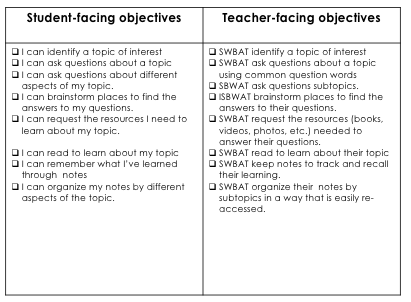
Short on time? Check out my ready-to-go unpacked CCSS ELA standards resources!
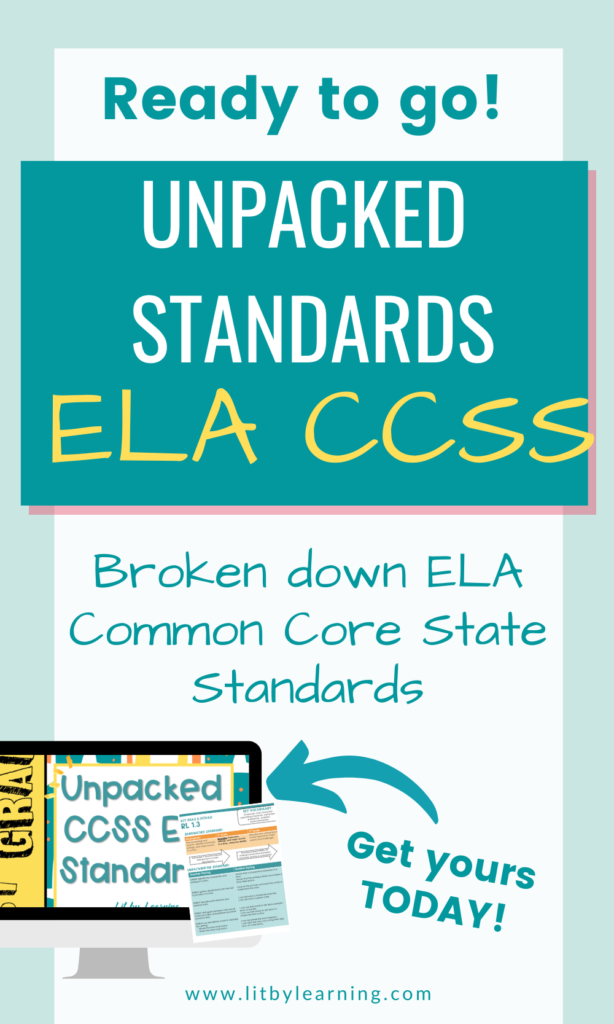
Read more from Lit By Learning!
I hope this article was helpful in teaching you how to unpack a standard! I firmly believe that an excellent understanding of the standards is the basis of a truly student-centered classroom.
How to build a student-centered vs teacher-centered classroom

